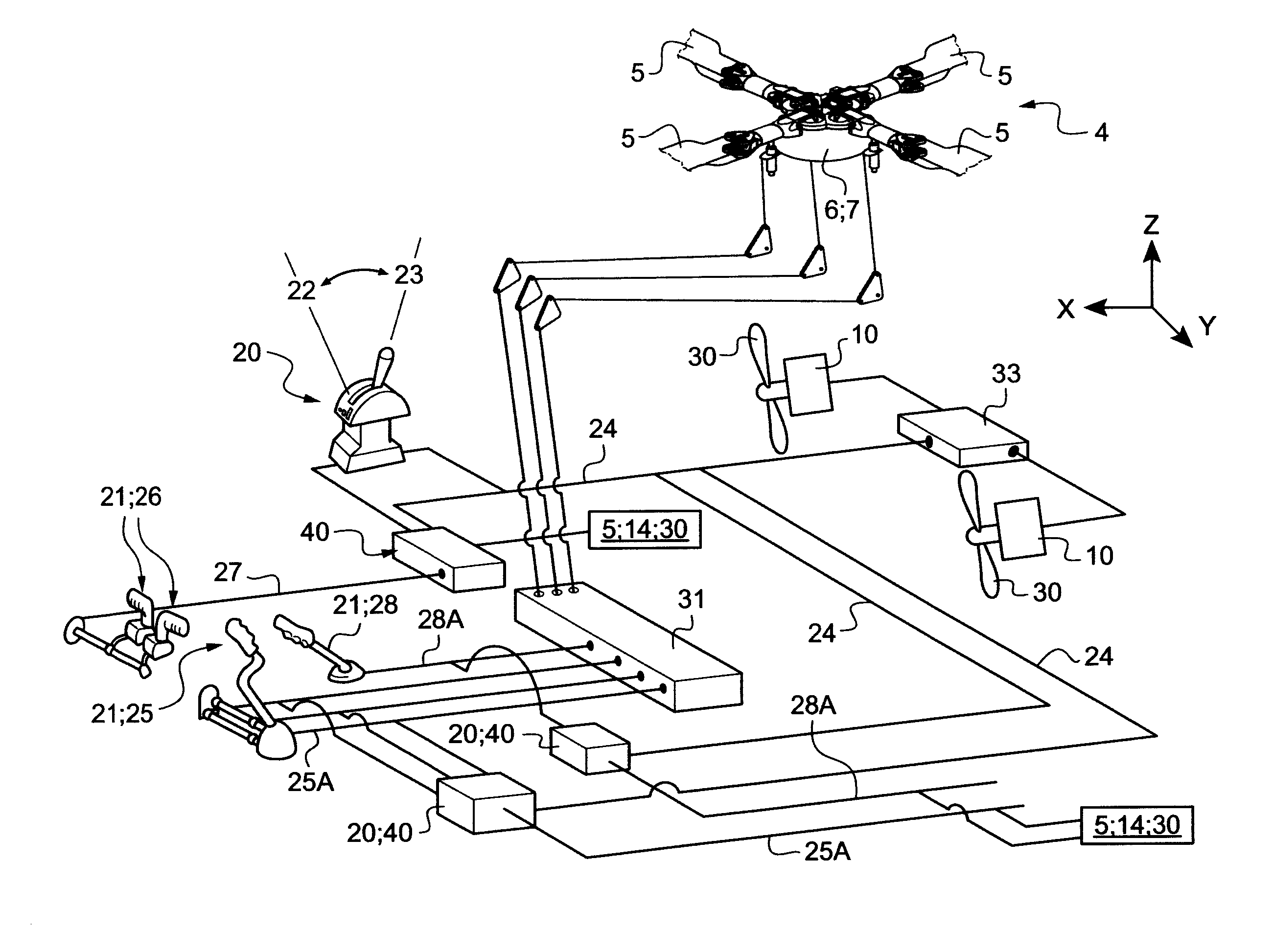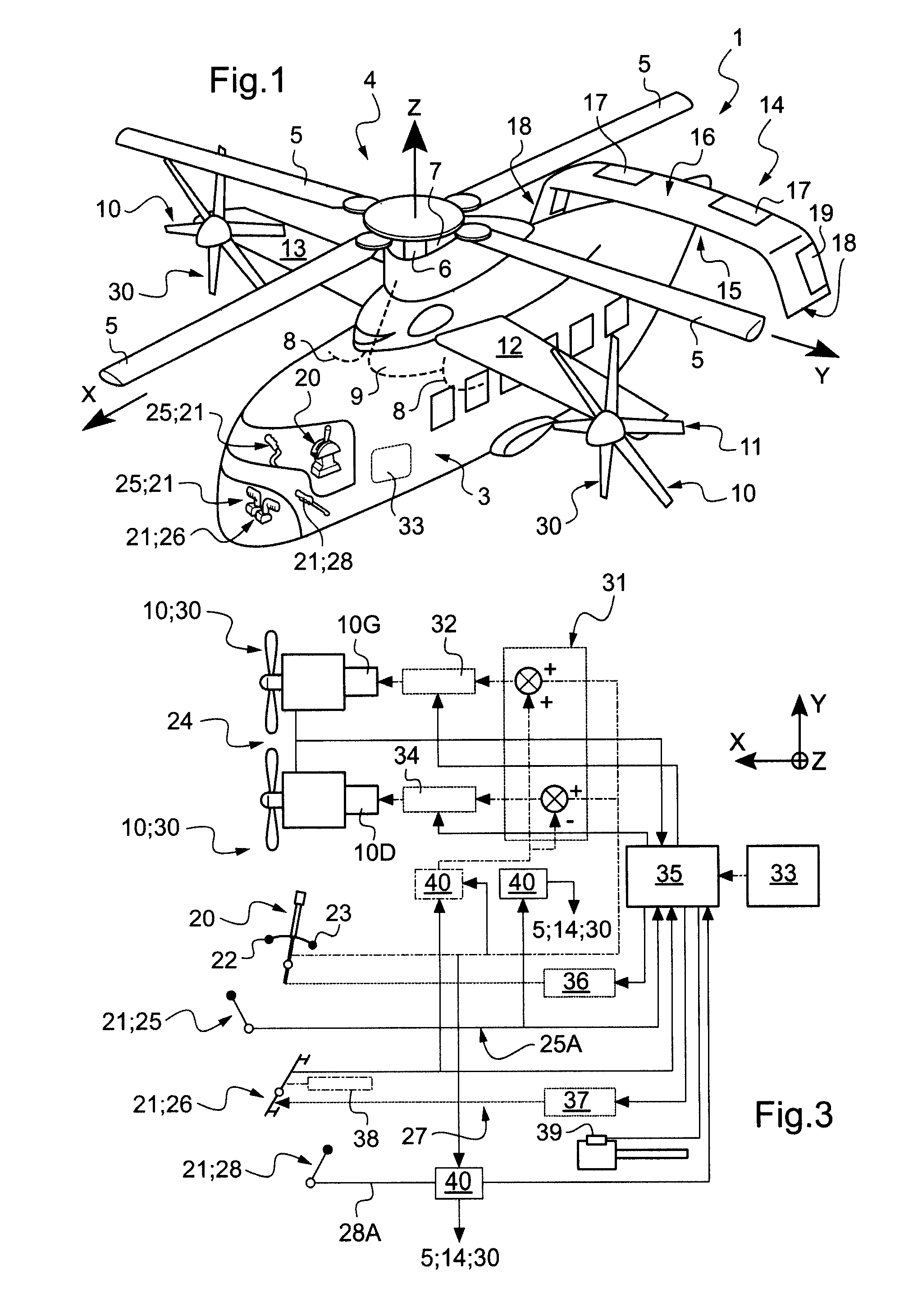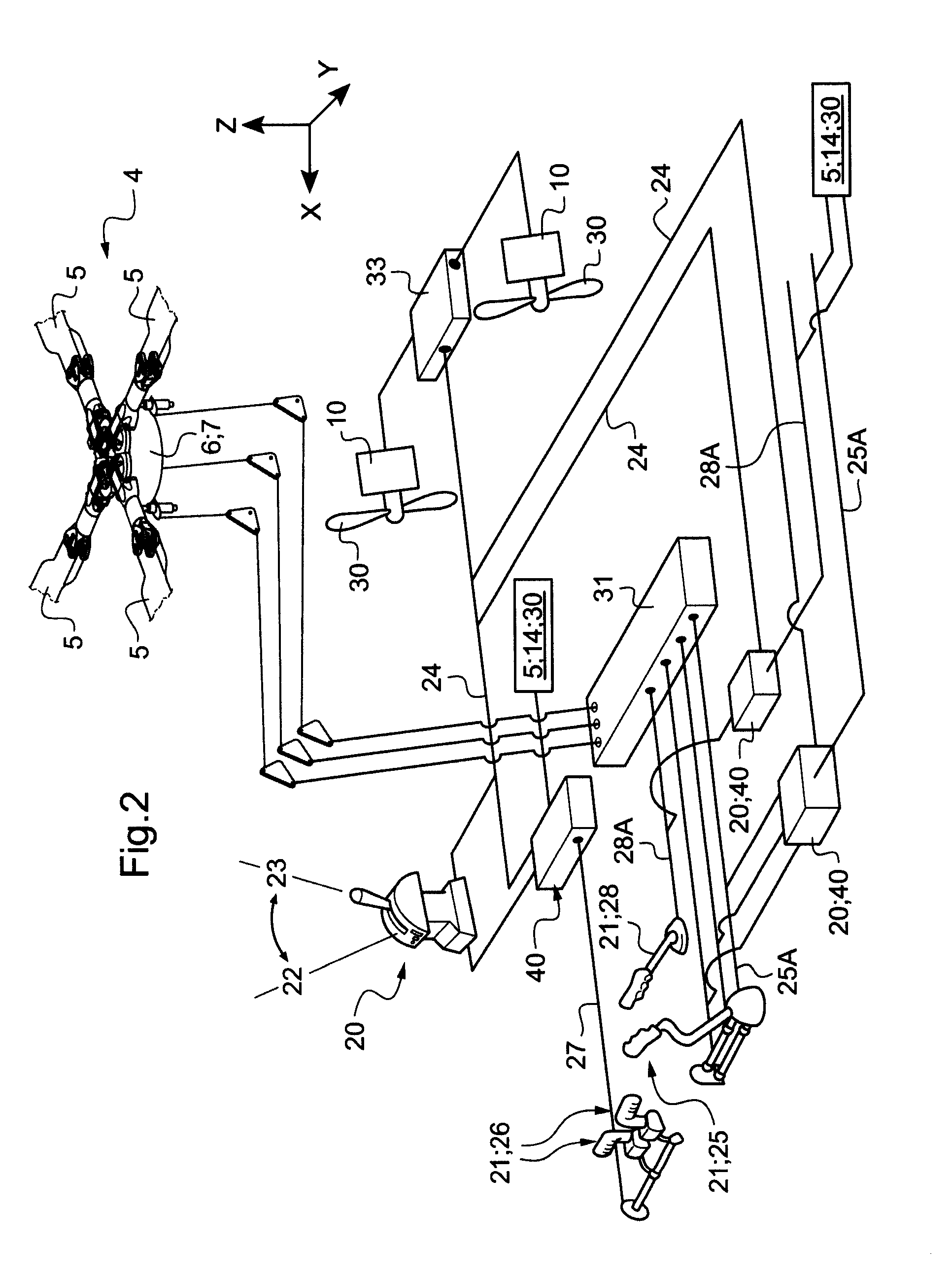Variable ratio crank for a manual flight control linkage of a rotary wing aircraft
a flight control and variable ratio technology, applied in the direction of propellers, aircraft transmission means, propulsive elements, etc., can solve the problems of hybrid helicopters being subjected to an increased risk of exceeding their structural and/or flying limits, automatic nose-up attitude,
- Summary
- Abstract
- Description
- Claims
- Application Information
AI Technical Summary
Benefits of technology
Problems solved by technology
Method used
Image
Examples
Embodiment Construction
[0100]The figures show three mutually orthogonal directions X, Y, and Z.
[0101]A “longitudinal” direction X corresponds to the lengths or main dimensions of the structures described. Thus, the forward thrust or the main component of the air speed on a level flight path is directed in this direction X.
[0102]In aviation, it is common for this direction X to designate generally the roll axis of the aircraft, when the aircraft is considered as a whole.
[0103]Another direction, Y, is said to be “transverse”, and corresponds to the lateral widths or dimensions of the structures described. These longitudinal and transverse directions X and Y are sometimes said to be horizontal, by way of simplification. For example, the distance from the fuselage of a propulsion arrangement is generally measured along this direction Y.
[0104]In aviation, it is common for the direction Y generally to designate the pitch axis of the aircraft. It is also this direction Y that is used to define the terms “left” (...
PUM
 Login to View More
Login to View More Abstract
Description
Claims
Application Information
 Login to View More
Login to View More - R&D
- Intellectual Property
- Life Sciences
- Materials
- Tech Scout
- Unparalleled Data Quality
- Higher Quality Content
- 60% Fewer Hallucinations
Browse by: Latest US Patents, China's latest patents, Technical Efficacy Thesaurus, Application Domain, Technology Topic, Popular Technical Reports.
© 2025 PatSnap. All rights reserved.Legal|Privacy policy|Modern Slavery Act Transparency Statement|Sitemap|About US| Contact US: help@patsnap.com



